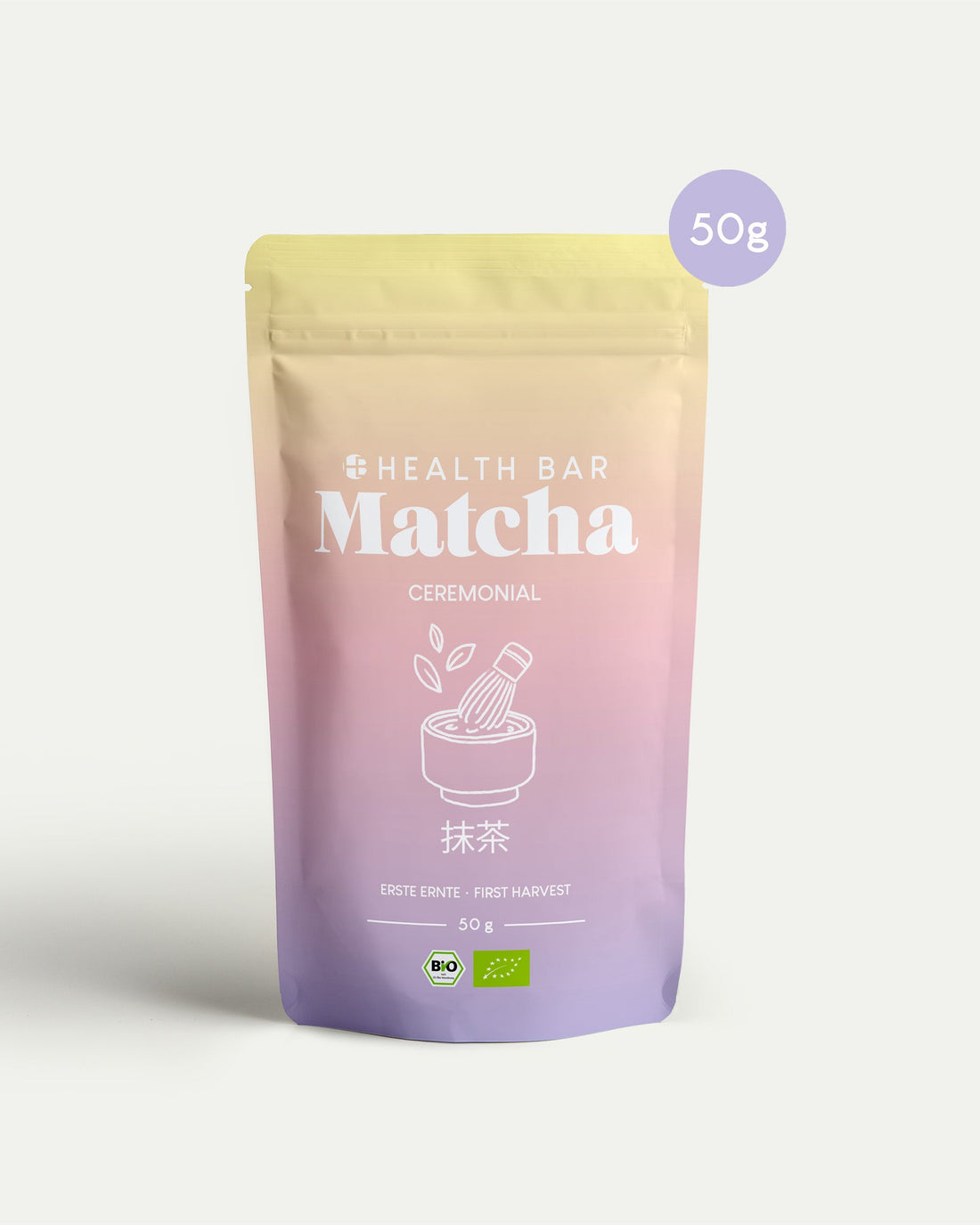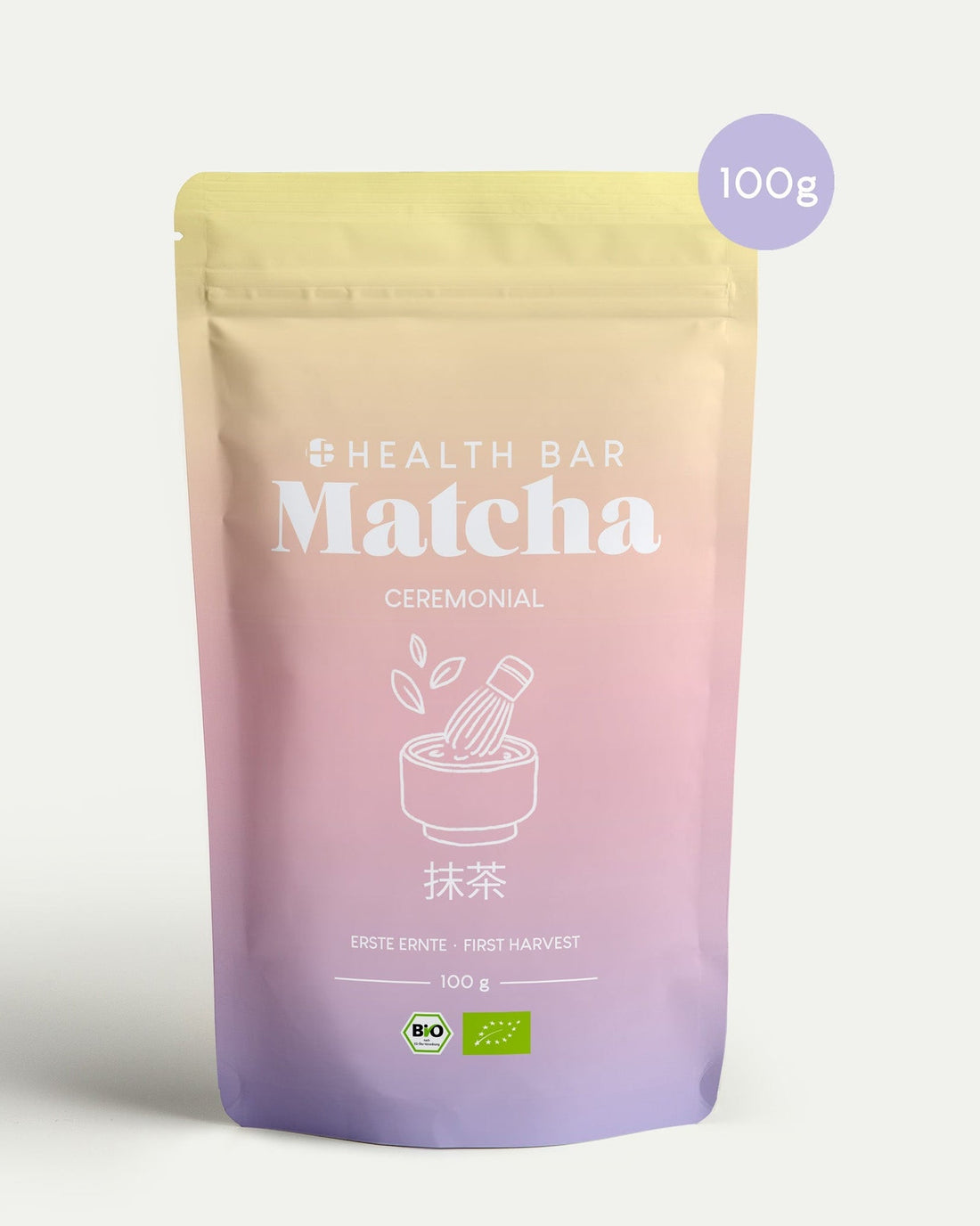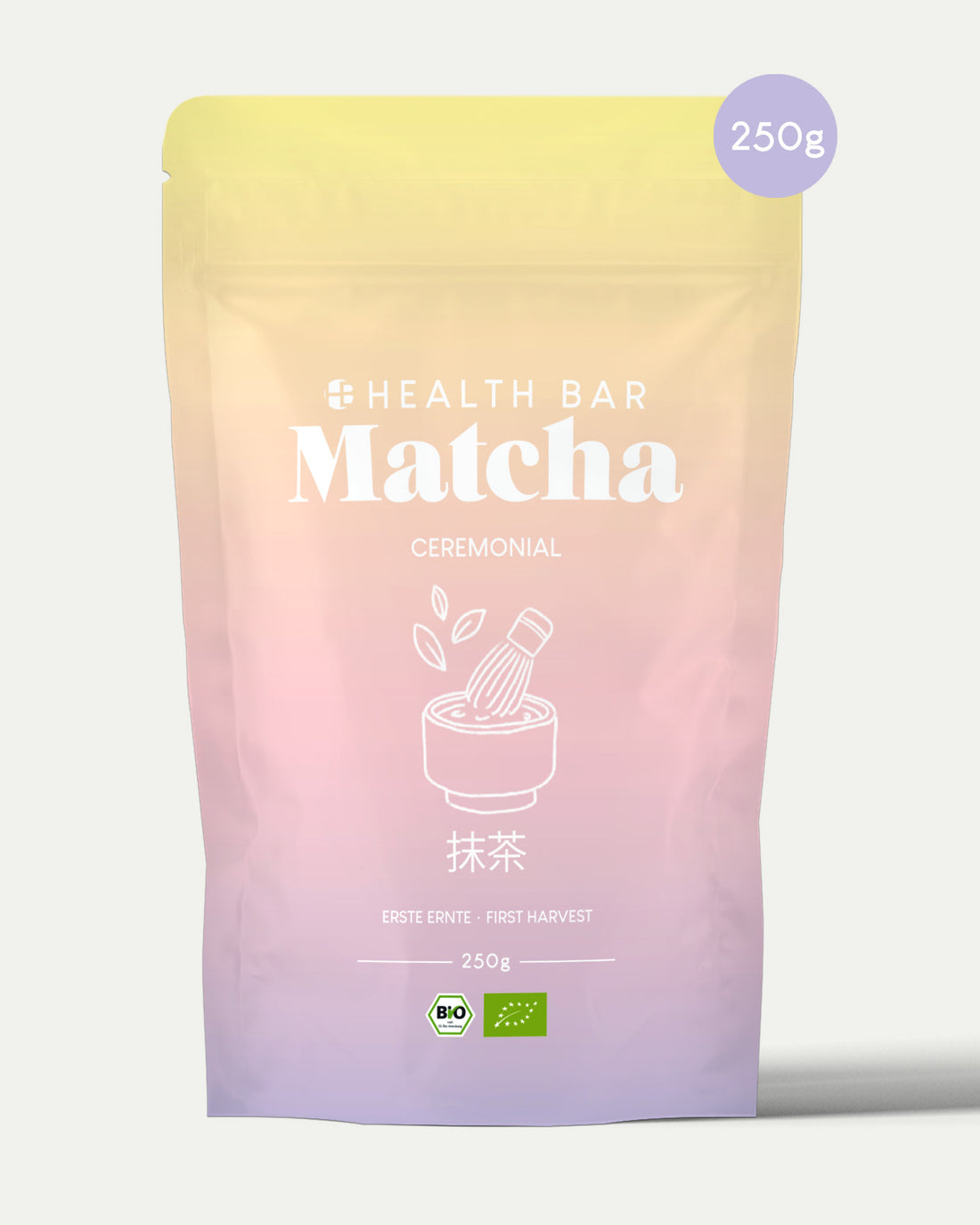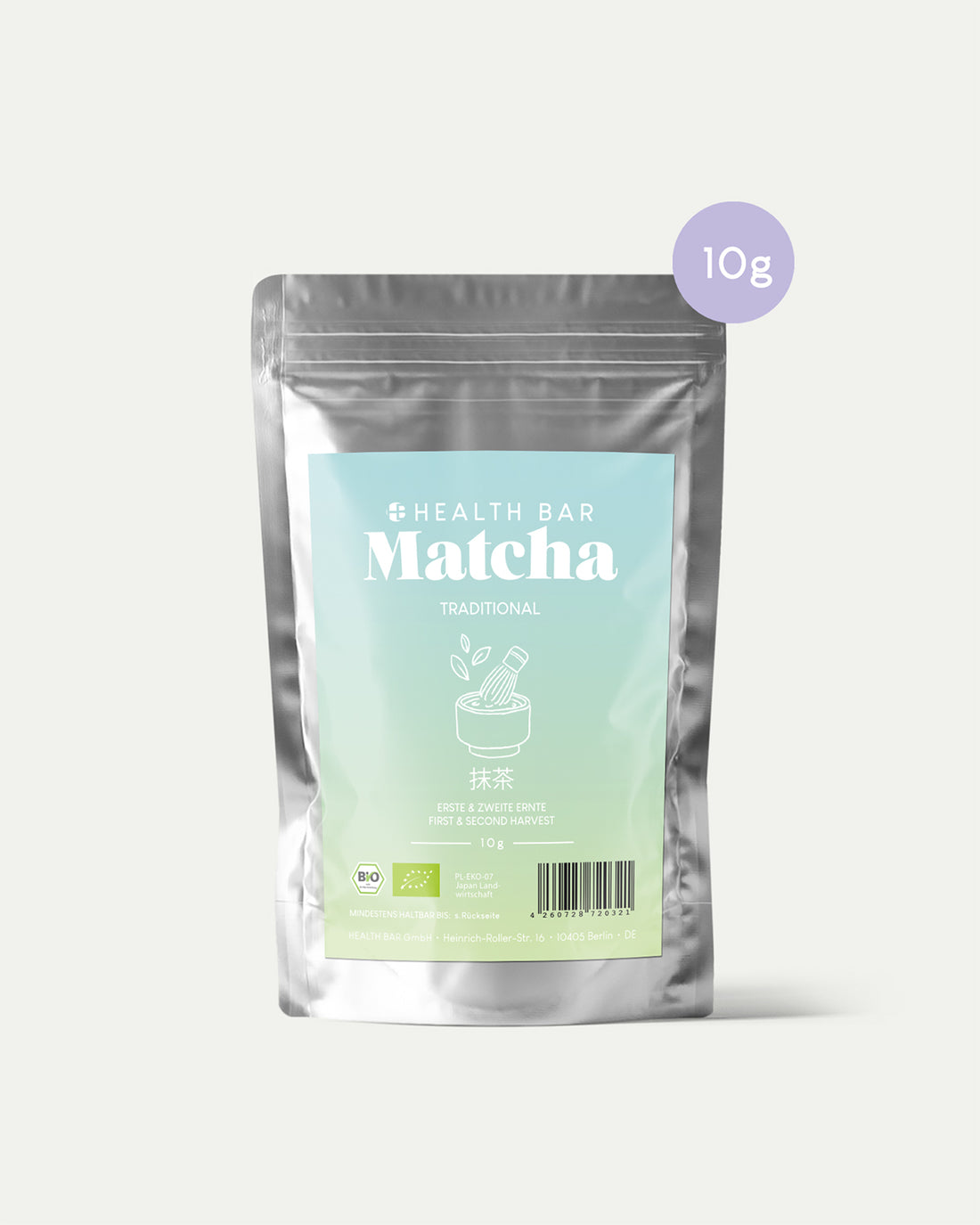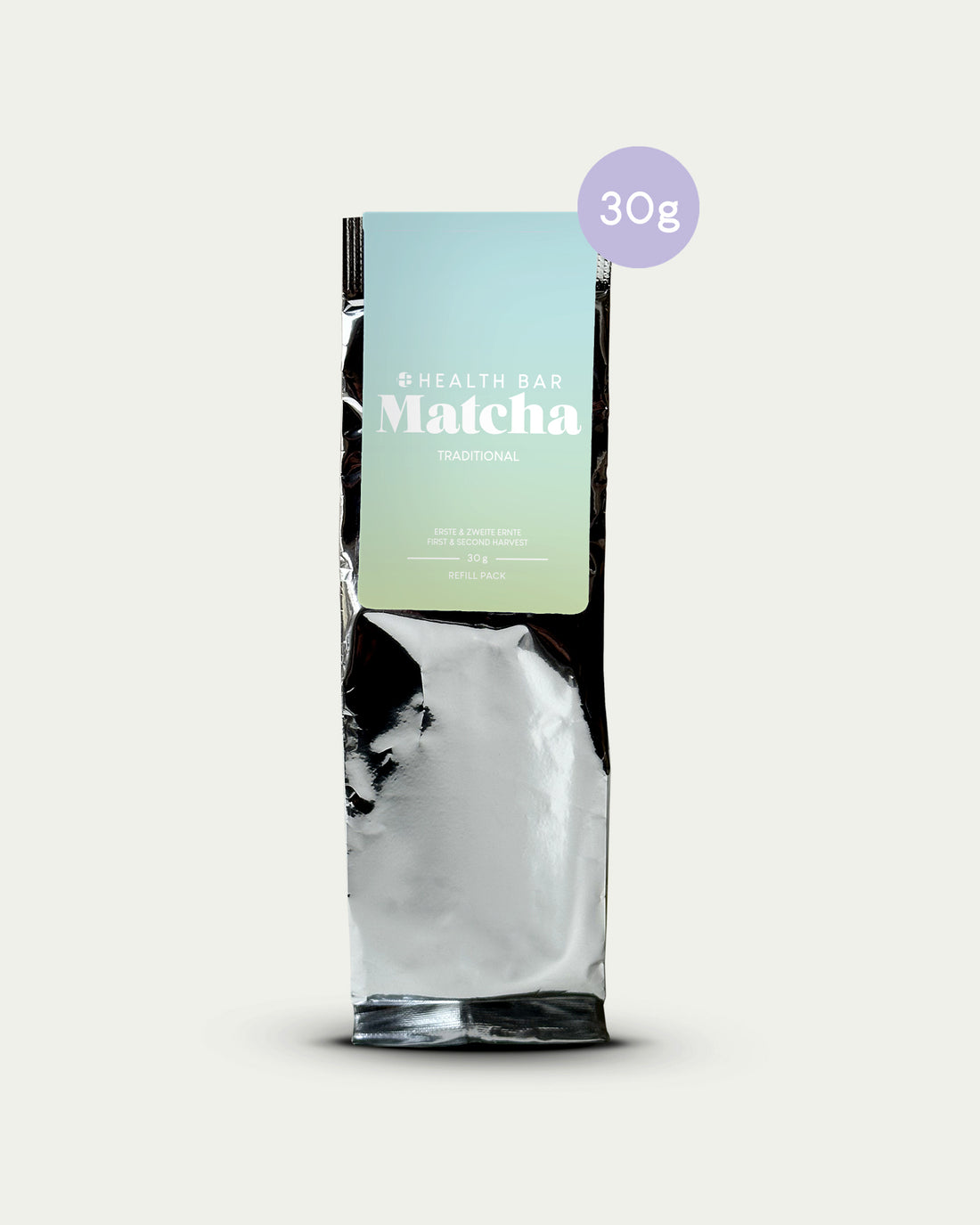
Un piacere per il corpo e per l'anima
L'arte della preparazione del matcha
Il matcha, conosciuto in Giappone come "oro verde", sta riscuotendo un crescente successo tra gli amanti del tè in tutto il mondo. Preparare questa bevanda unica, con le sue molteplici sfumature di sapore, non solo offre una carica di energia mattutina, ma anche un momento di calma ed equilibrio. Scoprite con noi questo delizioso tè verde giapponese e imparate come viene preparato tradizionalmente.
Istruzioni per preparare un tè matcha tradizionale
L'atto di La preparazione del matcha è un rituale profondamente radicato che esprime consapevolezza e rispetto per la tradizione secolareÈ una forma d'arte che richiede concentrazione e attenzione, ma anche un invito a concedersi un momento di pace. Le seguenti istruzioni vi guideranno attraverso i passaggi tradizionali per preparare un autentico tè matcha a casa.
-
Utensili necessari
Per la preparazione tradizionale del matcha, vengono utilizzati utensili speciali per ottimizzare l'esperienza della cerimonia e il sapore del tè. Una ciotola per il matcha, una frusta di bambù e un cucchiaio di bambù sono essenziali per preparare il tè nel modo tradizionale. Questi strumenti facilitano la miscelazione, favoriscono una profonda connessione con la cerimonia del tè e contribuiscono a creare un'autentica esperienza matcha.
-
Lista di controllo per la preparazione del Matcha
Il nostro matcha è di così alta qualità che non hai bisogno di un setaccio: Ulteriori informazioni
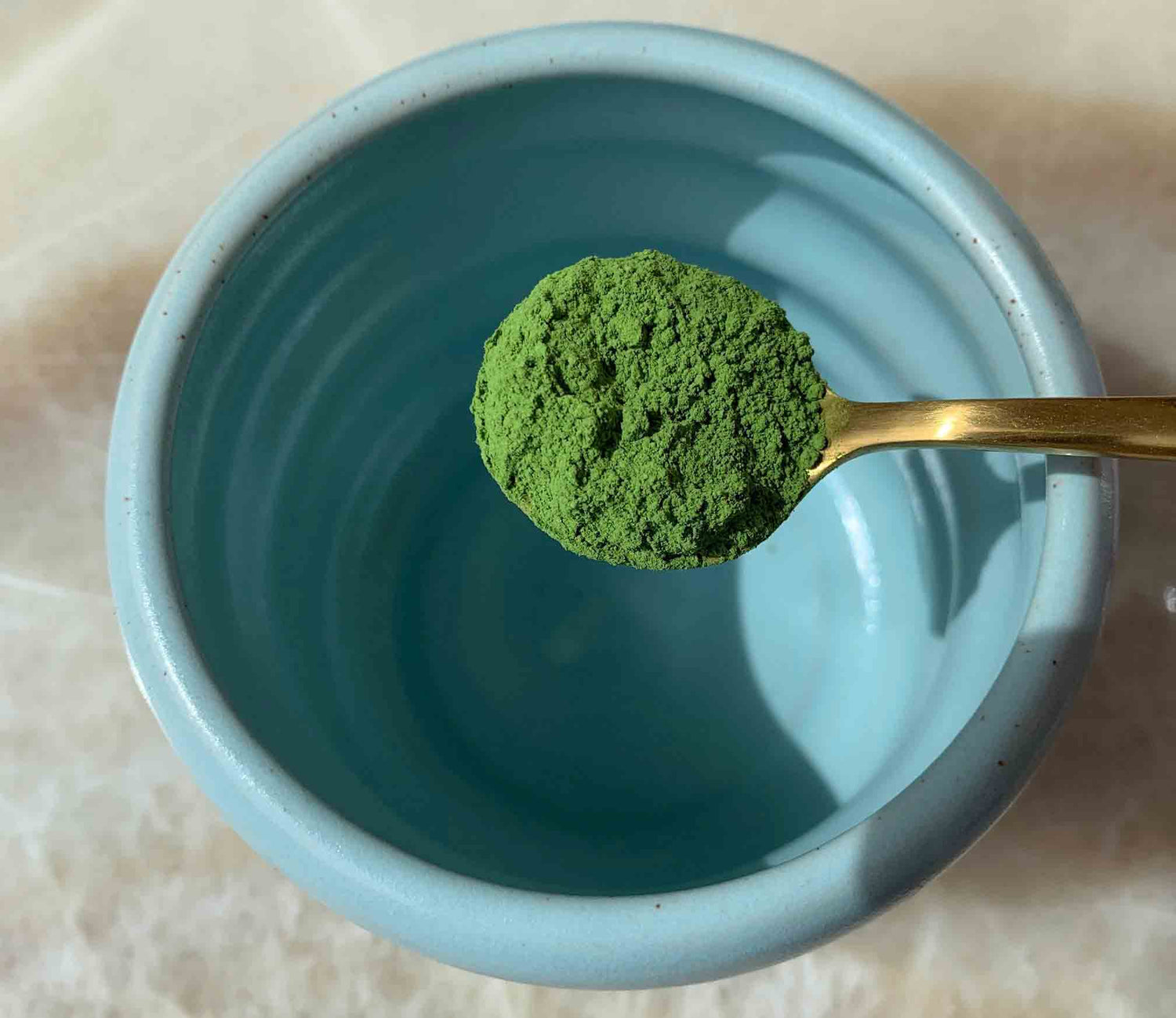
1. Dose di Matcha
Utilizzare il cucchiaio di bambù Chashaku o un cucchiaino per 1–2 cucchiaini leggermente colmi di matcha nel tuo chawan. Il nostro matcha non ha bisogno di essere setacciato.
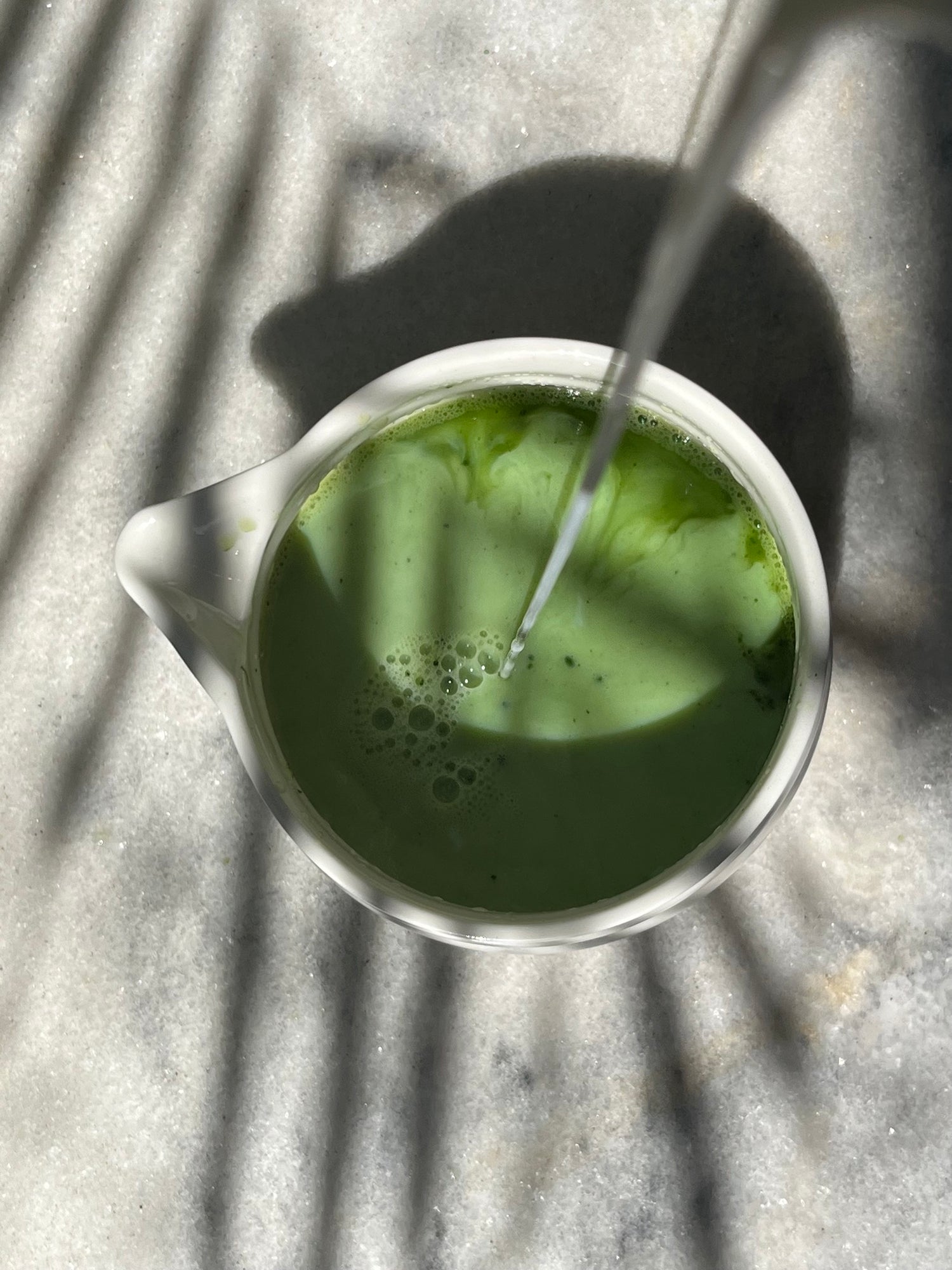
2. Aggiungere acqua
Annaffiare con cura 70–100 ml del preparato acqua calda circa 80 °C nella ciotola.
Assicuratevi che l'acqua non sia troppo calda, in modo che il matcha non diventi amaro e mantenga i nutrienti.
Per la preparazione è possibile utilizzare anche acqua fredda.
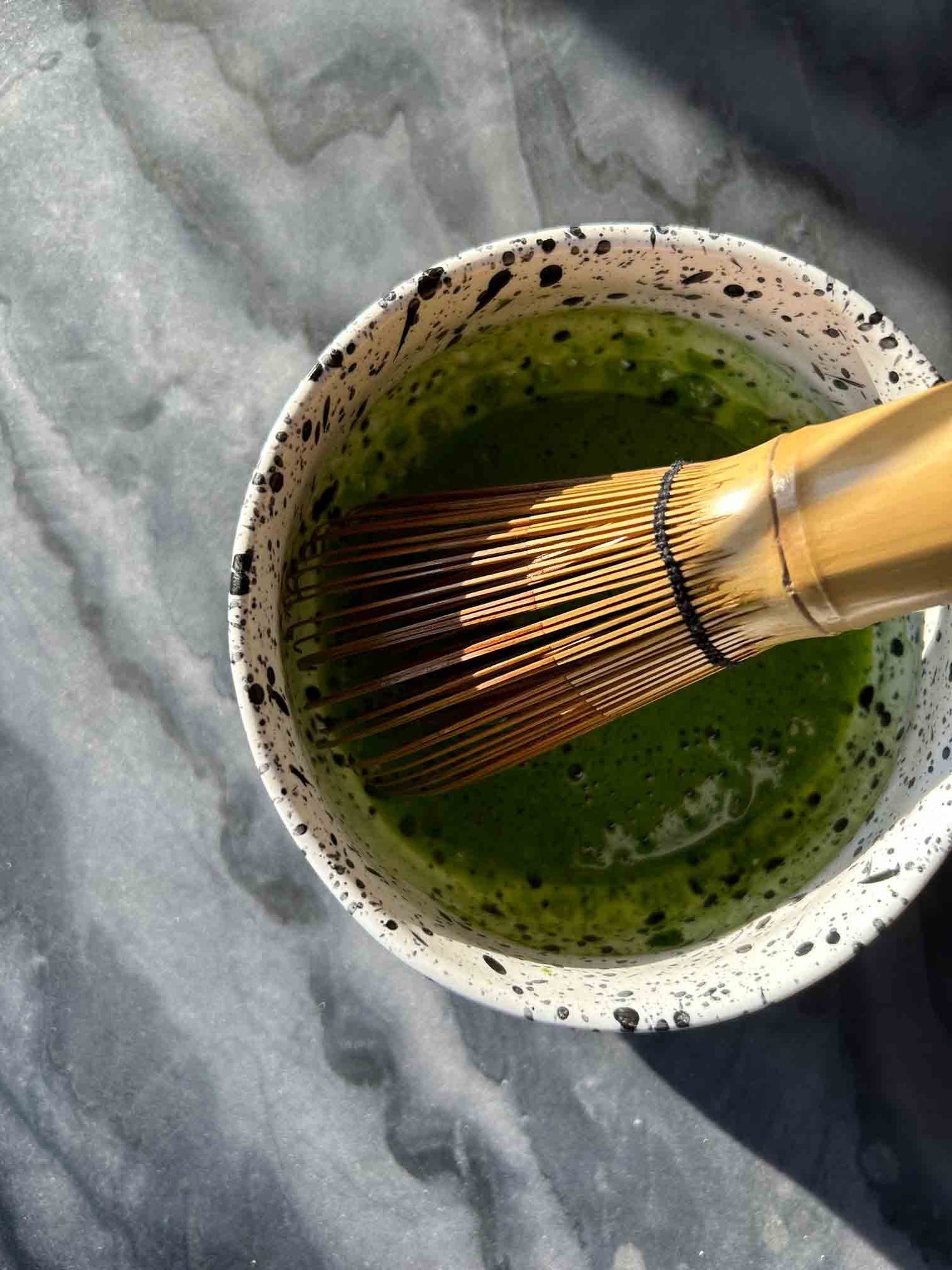
3. Colpire
Prendi il chasen e colpisci il tè velocemente in una W o M-formare fino a quando un strato di schiuma soffice Sulla superficie dovrebbero formarsi delle piccole bolle.
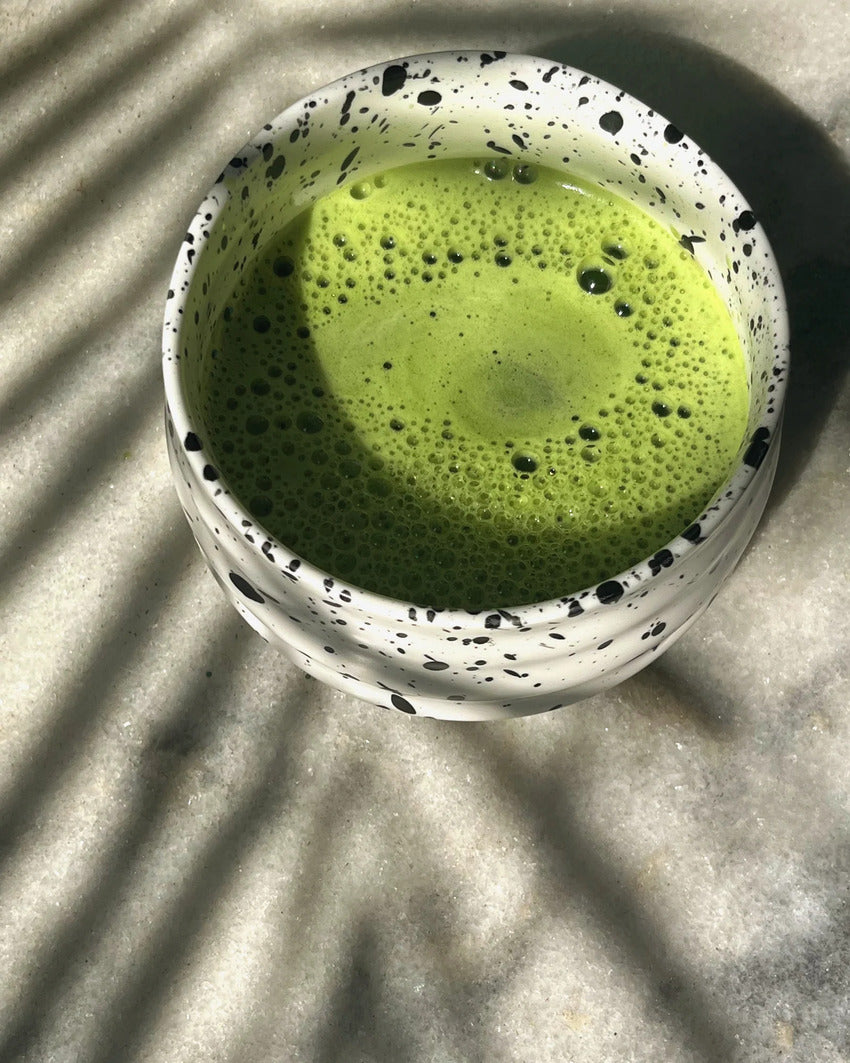
4. Divertiti
Prendetevi un momento per apprezzare il matcha appena preparato con tutti i suoi benefici ed esprimete gratitudine prima di berlo a piccoli sorsi. In Giappone, questo si chiama ITADAKIMASU (頂きます).

Vivi il tuo momento Matcha
Il set di partenza perfetto per te
✔ Contiene tutto il necessario per iniziare
✔ Risparmia tempo e garantisce una preparazione adeguata
✔ Matcha biologico di alta qualità
✔ Una frusta di bambù tradizionale per risultati perfetti
Consigli per preparare il matcha
- Temperatura dell'acqua: Assicuratevi che l'acqua non bolla per preservare tutto il sapore del matcha.
- Formazione di schiuma: Una schiuma fine e cremosa è il segno di un matcha perfetto.
- Quantità di Matcha: Sperimenta la quantità di polvere che preferisci, in base al tuo gusto personale.
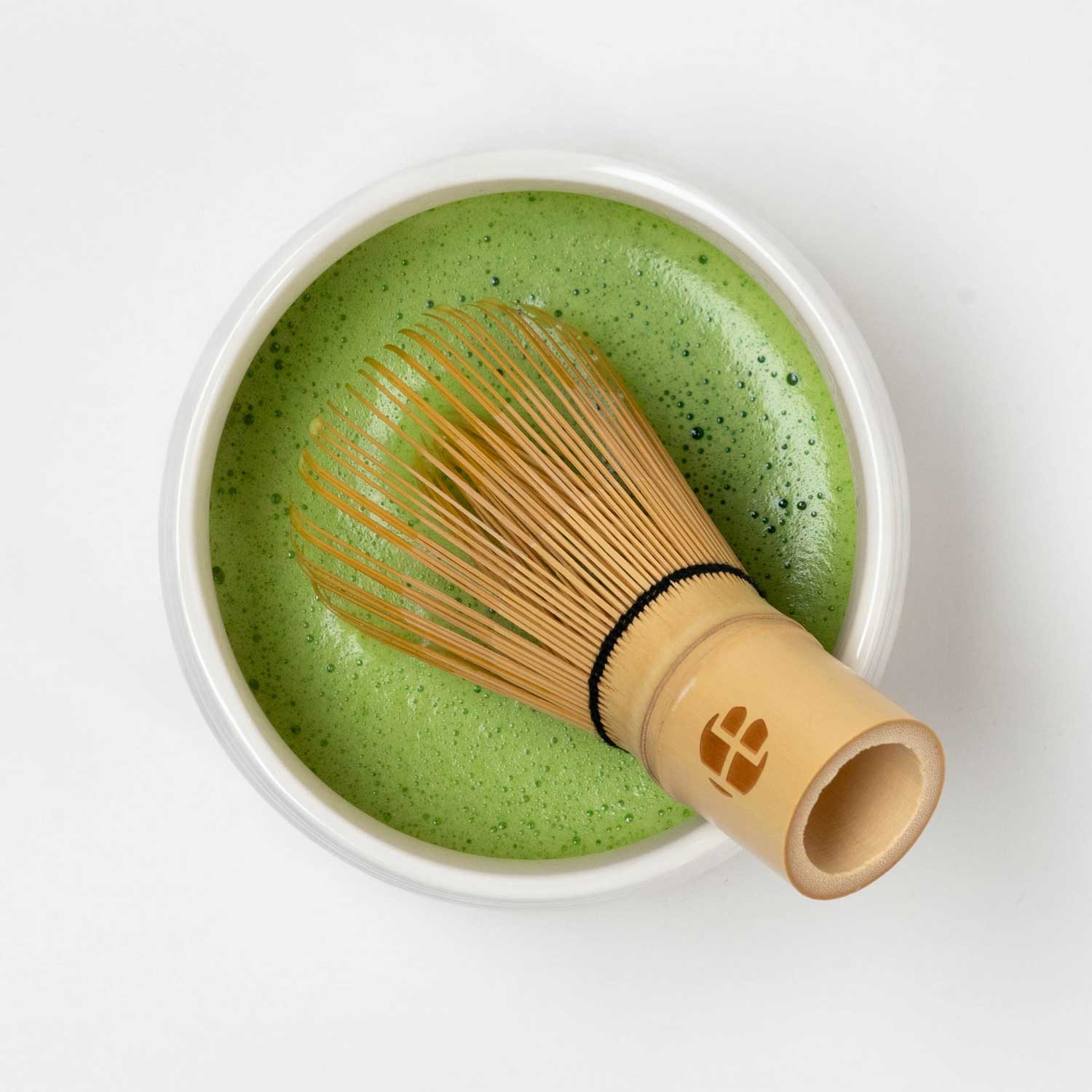
Come usare correttamente la frusta per il matcha
Il chasen, la tradizionale frusta per il matcha, è essenziale per una preparazione perfetta, ma come prendersene cura e utilizzarla correttamente? In questa guida, vi mostreremo cosa è importante per garantire che il vostro matcha risulti sempre ben schiumoso e che la frusta duri a lungo.
Metodi di preparazione moderni
Oltre all'approccio classico, si apre un mondo di modi moderni per gustare il matcha. In particolare, il matcha latte e il matcha freddo stanno riscuotendo grande successo e offrono una deliziosa bevanda rinfrescante.
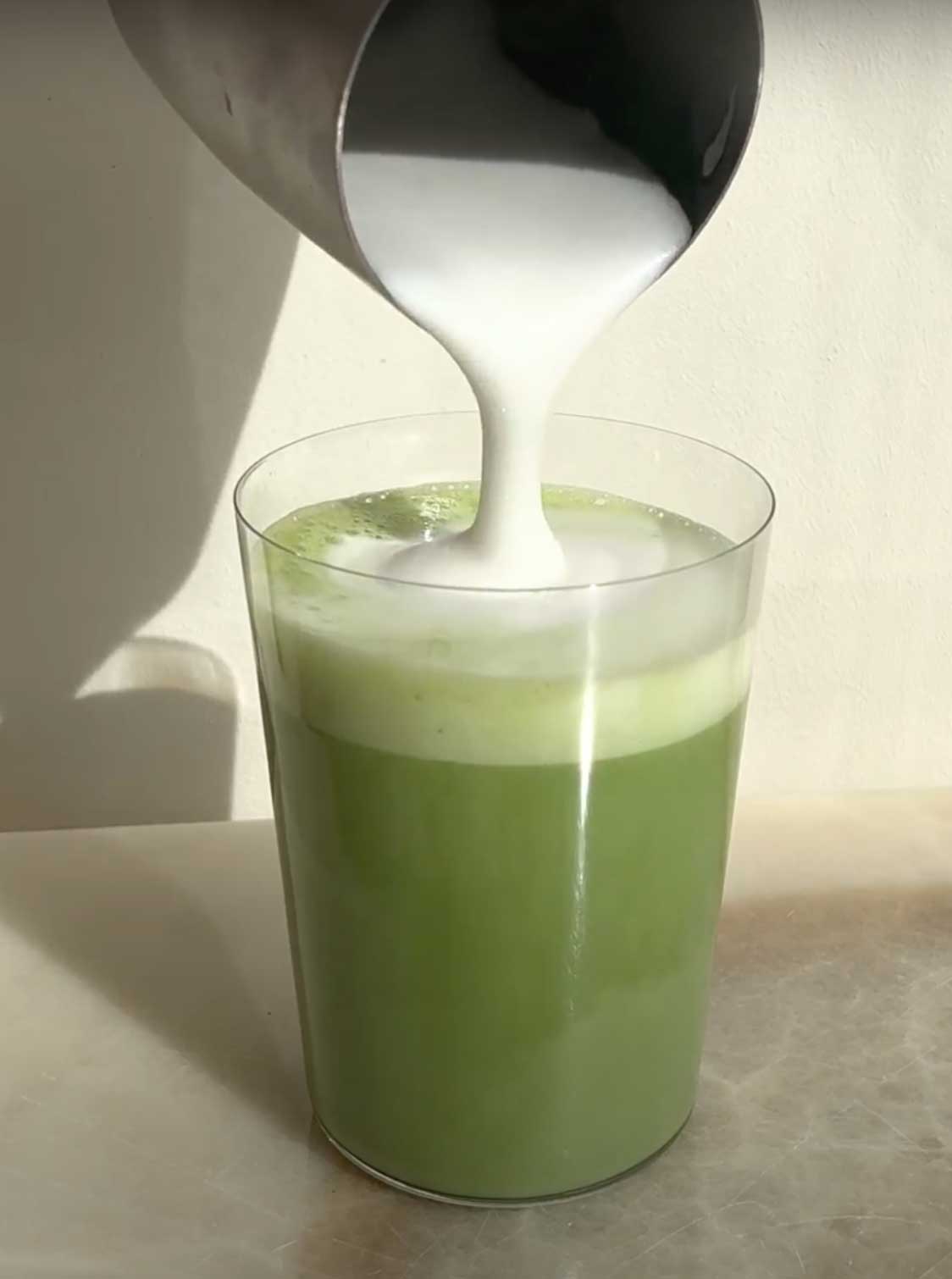
Latte matcha
Il matcha latte è caratterizzato da un divino connubio tra la cremosità del latte e l'aroma ricco e saporito del tè verde. Scopri come preparare questa deliziosa delizia in questo articolo.
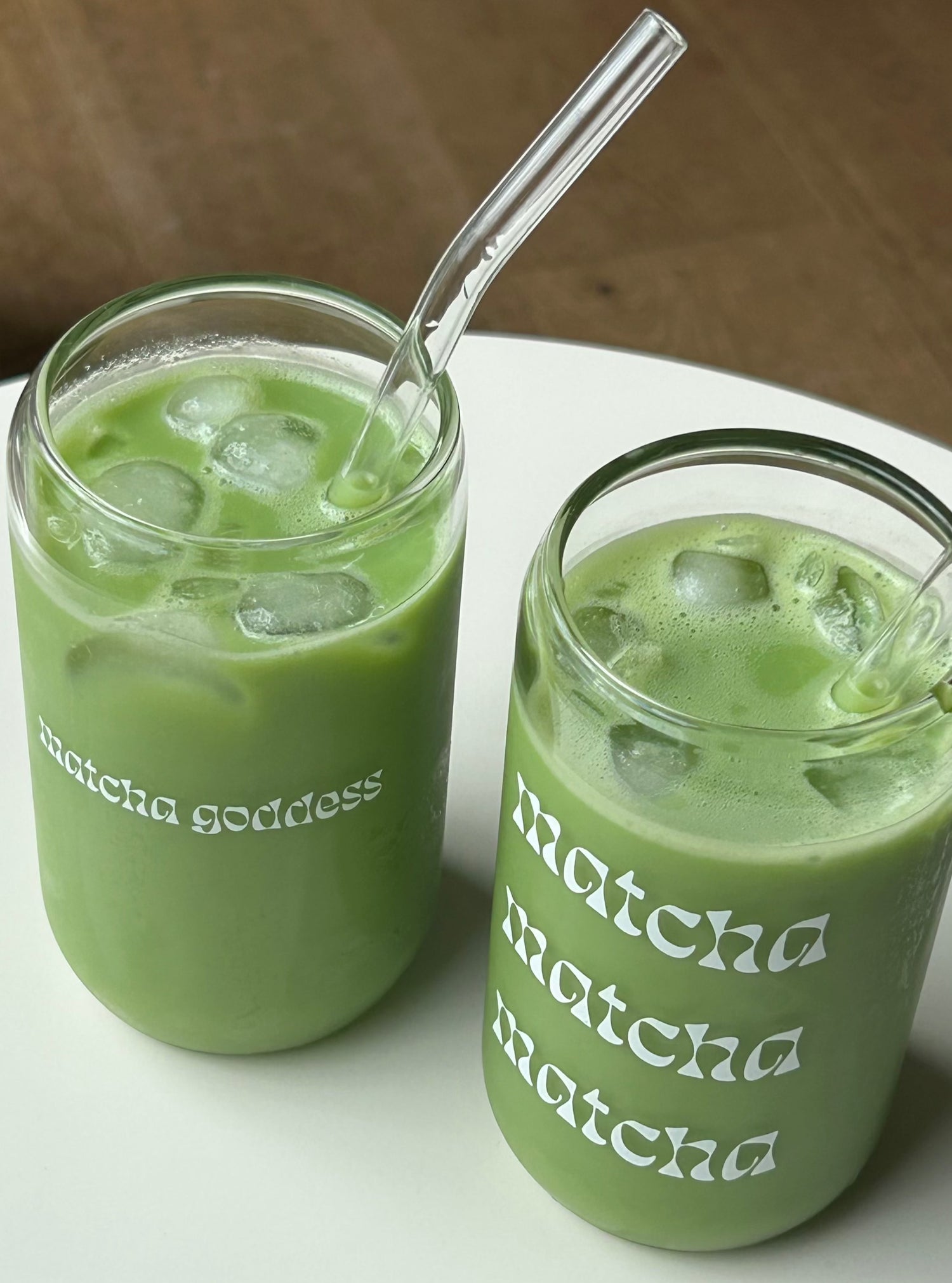
Matcha ghiacciato
Nelle calde giornate estive, il matcha freddo è una delizia rinfrescante che stimola i sensi in vari modi. Scopri come preparare questa bevanda cult e corroborante nella nostra guida.
Il matcha può essere preparato freddo?
Per le giornate calde o quando si ha fretta, il matcha freddo è perfetto. Prepararlo in uno shaker è un'opzione popolare. Usate da uno a quattro cucchiai di polvere di matcha e aggiungete da 150 a 500 millilitri di acqua, a seconda delle preferenze. Agitate energicamente il tutto e aggiungete cubetti di ghiaccio per ottenere la bevanda estiva perfetta.
Grazie alla bassa temperatura dell'acqua, le preziose vitamine vengono preservate. La ricetta base può essere variata in molti modi, aggiungendo latte, gelato o altri ingredienti per aggiungere varietà alla vostra preparazione di tè.
Domande frequenti
Qual è il modo migliore per conservare il matcha?
Conservare sempre il matcha in un contenitore ermetico, in un luogo fresco e buio, per mantenerne la freschezza e il colore.
Quanto dura il matcha?
Se non aperto, il matcha può essere conservato per diversi mesi. Una volta aperto, è consigliabile consumarlo entro 1-2 mesi.
Il matcha può andare a male?
Il matcha perde il suo sapore e scolorisce nel tempo, soprattutto se conservato in modo improprio. Se ha un sapore amaro, è segno che è andato a male.
Come faccio a sapere se il mio matcha è ancora buono?
Un buon matcha è caratterizzato da un colore verde brillante e da un aroma fresco e leggermente dolce. Lo scolorimento e un aroma spento sono segnali che il matcha ha ormai superato il suo periodo migliore.
Il fascino del Matcha
Il matcha, la vibrante polvere verde giapponese, rappresenta molto più di una semplice bevanda: incarna una ricca storia, tradizioni radicate e rituali significativi. Il fascino che circonda il matcha va oltre il suo sapore unico. Deriva dall'abilità nella sua produzione, dal significato spirituale della sua cerimonia e dalla sua moderna riscoperta come superfood versatile.
-
Preparazione del Matcha: un patrimonio di tradizione
Le sue origini risalgono alle pratiche del Buddismo Zen in Giappone, dove il matcha veniva utilizzato non solo per migliorare la consapevolezza durante la meditazione, ma anche come elemento centrale nella cerimonia del tè, altamente ritualizzata, il chanoyu. Questa cerimonia enfatizza armonia, rispetto, purezza e quiete: valori che risuonano in ogni sorso di matcha.
-
Un simbolo di perfezione
La produzione del matcha è un'arte che richiede anni di esperienza. Le foglie di tè (tencha) vengono raccolte a mano con cura, cotte a vapore e macinate lentamente in mulini di granito fino a ottenere una polvere fine, così intensa da essere utilizzata come pigmento nella pittura tradizionale giapponese. Questo processo preserva non solo il colore verde brillante e il sapore intenso, ma anche tutti i nutrienti delle foglie.
-
Una fonte di ispirazione
Negli ultimi anni, il matcha ha conquistato il mondo, ben oltre i confini del Giappone. Ispira chef, baristi e professionisti della salute a creare nuove creazioni, dai matcha latte e frullati ai dessert e ai prodotti per la cura della pelle. La sua versatilità e il mix di tradizione e modernità rendono il matcha un simbolo dell'innovazione culinaria contemporanea.





